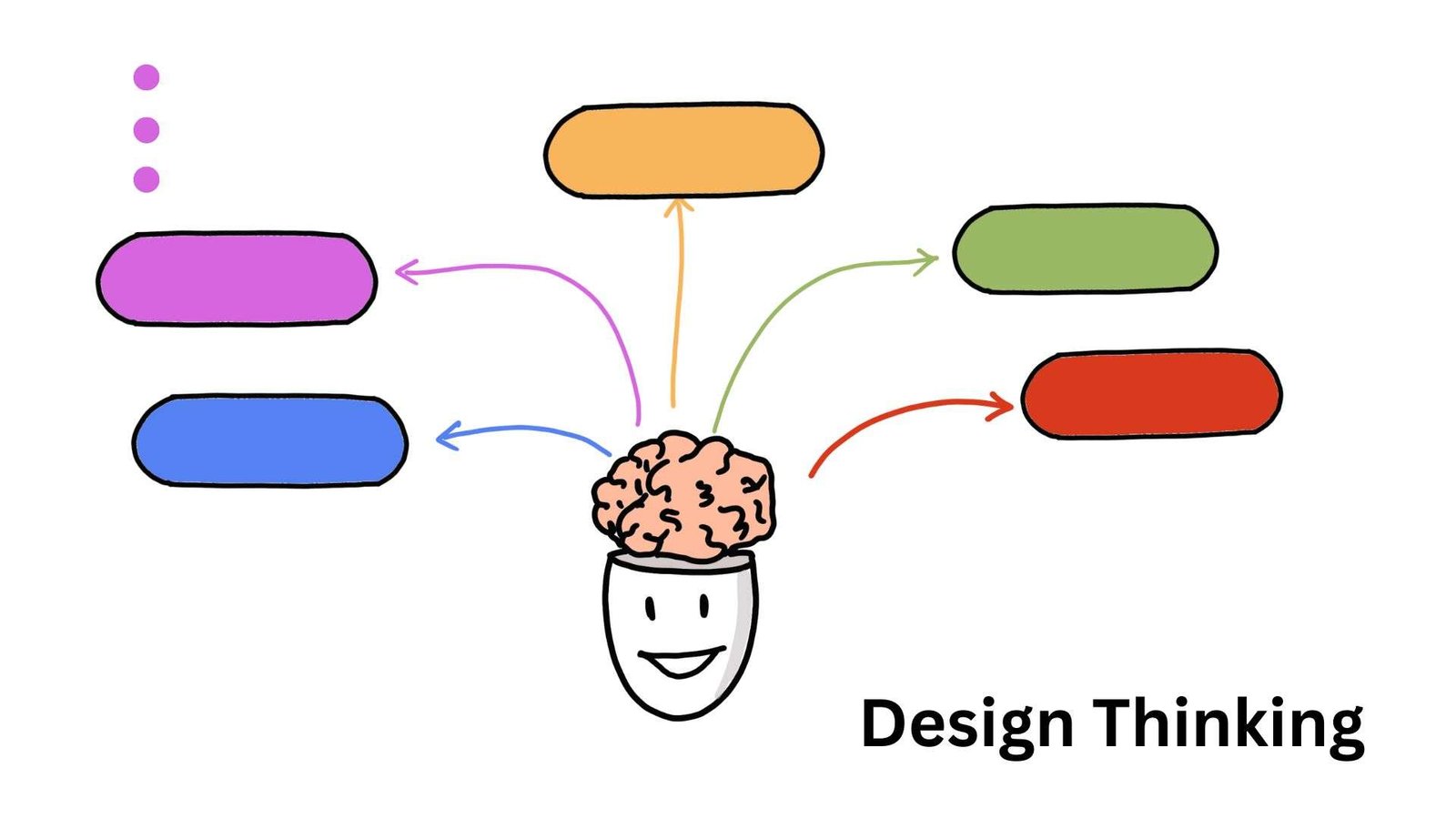Example: Product development team working on a new app
Consider a product development team working on a new app. They start by empathizing with users to understand their needs and pain points. Then, they define the core problem, brainstorm creative solutions, create prototypes, and test them with users. This iterative process helps them refine their product until it meets user needs effectively.
Key elements illustrated in this scenario include:
- Empathy: Understanding the needs and experiences of users.
- Define: Clearly articulating the problem to be solved.
- Ideate: Generating a wide range of creative ideas.
- Prototype: Building tangible representations of ideas.
- Test: Seeking user feedback and iterating on solutions.
In conclusion, the metaphor of Design Thinking as a process involving multiple arrows pointing to and from the brain highlights the iterative, user-centered approach to problem-solving. By empathizing with users, defining problems clearly, ideating creatively, prototyping solutions, and testing iteratively, teams can develop innovative and effective solutions. Embracing Design Thinking allows for continuous improvement and ensures that products and services meet real user needs.
